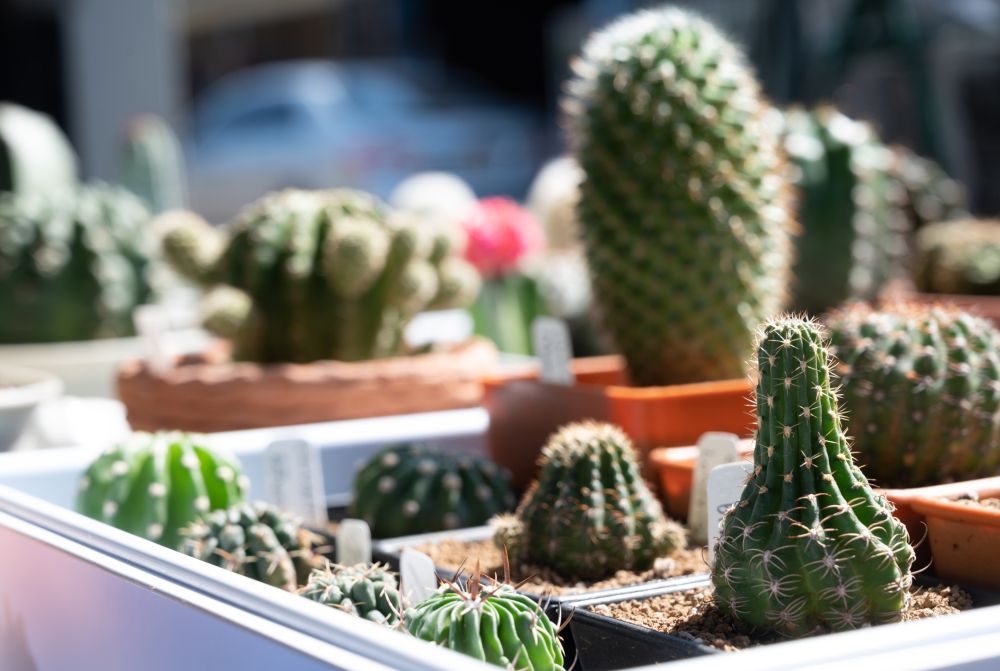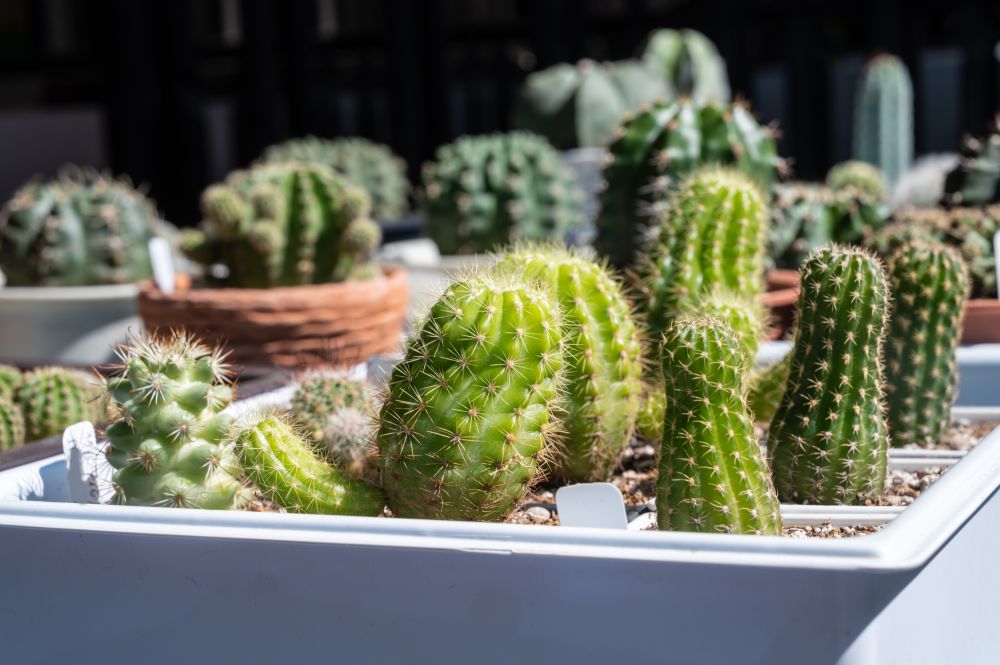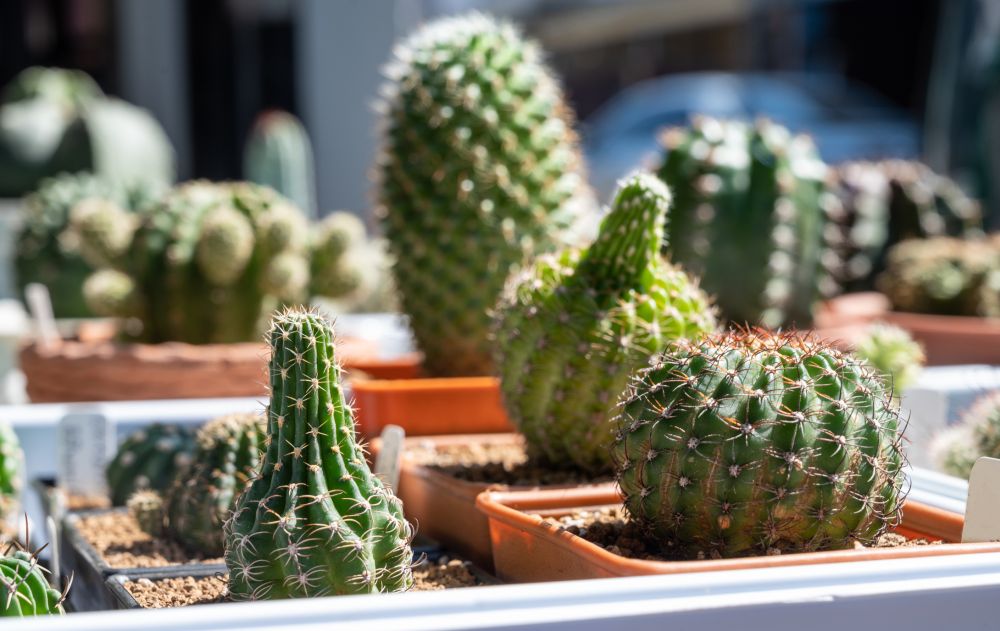Etiolated Succulents: How to Spot & Fix Etiolation
Do you know how to spot etiolation on succulent houseplants? Picture this—it’s an ecstatic Saturday morning. Now, you want to do a pretty standard maintenance checkup. But you notice something offbeat about your succulents’ appearance. They seem to have a spindly growth. Or maybe it’s the foliage color that looks a little grumpy. At this point, you start to speculate that the symptoms are probably a result of transplant shock or heat stress.
In case your succulents are experiencing similar signs, there are chances they could be etiolated. And If you’re a starter, you might ask yourself this question—what in the world of succulents is etiolation? This guide spells out what causes this condition, as well as the remedies you could use to restore your succulent houseplants. So, let’s get down to it.
What is Etiolation?
Etiolation is a condition that alters the appearance of most succulents when they lack their typical temperature and light needs. It induces blanching in vegetable gardens—the deterrence of harmful microorganisms. Blanching also helps to boost foliage color and slow down the loss of vitamins. Unfortunately, the results aren’t always pleasing in flowering or adult garden plants.
Succulents are light-sensitive plants. They’re likely to suffer when growing under insufficient light. If your succulent plants are growing in a warm and humid environment, but the lighting conditions are scanty, the leaves and stems will gradually start to stretch in search of light. While new growth will emerge, the pattern will appear too leggy. Your houseplants will have weak stems since they’ll elongate abnormally.
Why Do Succulents Etiolate?
It’s needless to stress out that plants need sunlight to induce photosynthesis. If the growing medium is not close enough to light, the leaves and stems will naturally begin to stretch out as much as they can. On the face of it, it might seem like a typical adaptation. However, the entire foliage will look deformed, while reverting the plant to its initial shape can prove to be unyielding.
Etiolation is usually a result of hormones known as auxins. Stem tips will release the auxin hormone, which is responsible for cell elongation. When light is insufficient, the stem tips will produce it in excess. Auxins move to the darker side of the plant, stimulating the cells to grow taller than the matching cells on the side receiving most of the light.
Worse of all, auxins, when in excess, trigger an intolerable acidity level that ruptures the cell walls. A non-enzymatic protein commonly referred to as expansin also causes the cell walls to loosen up a bit. Thus, your succulents will unwittingly waste a lot of energy as the etiolation condition continues to surge.
What Damage Does Etiolation Cause?
There isn’t any actual damage to worry about when etiolation occurs. But the morphological symptoms of etiolation usually go far beyond to ruin your plant’s aesthetic worth. Apart from the buildout of weak stems, the foliage will look pale, and your plant will lose some leaves over time. In addition, soft and weak stems tend to be prone to breakage. And if the cell walls are weak, your succulents will easily catch fungal or bacterial diseases.
The only way to dodge this condition is if you’re propagating your houseplants using seeds. Seedlings will naturally de-etiolate once the sprouts have ample access to light. So when your potted plant is beginning to grow leggy and overly tall, one of the foolproof you’d impulsively think of would be to adjust the position where it’s growing.
But it’s worth noting that some succulents tend to be a little light-sensitive to light than others. So, it’s best to learn the light patterns favorable for houseplants before picking a spot to place the growing medium. Also, the abnormal lengthening of leaves and stems will cause the tips of new growth to appear as if they’re suffering from chlorosis.
Chlorosis is a condition that stems from iron deficiency. Although succulents are known for being slow growers, the intense energy used to search for light will cause them to have long internodes. And as a result, the leaves will erroneously be spaced out. Such unusual rapid growth will ultimately cause the plant to lean on one side. Not to mention the pale and feeble appearance that makes your succulents lack their vibrancy.
How to Stop Etiolation
When treating etiolation, it’s best to note that the condition is a biological reaction that occurs if parts of the plant can’t receive enough sunlight—except for seedlings that naturally de-etiolate. Sadly, it’s nearly impossible to revert your plants to their primal height and shape. And this is especially true if you have succulents growing outdoors right under other plants. Here are a few tips you can work with to gradually alienate the condition:
1. Relocate the Growing Medium
As you probably know, succulents need a few hours of bright but filtered light each day. They might be drought-tolerant and look all hardy. But it’s hard to throw their lighting requirements out of the window without dealing with the adverse effects of etiolation. When growing indoors, place the container near a window that’s facing south. There it will receive enough light for at least 4 hours every day. Apart from picking a sunny location, you can choose to grow your succulents outdoors when warmer temperatures kick in.
Remember to move them indoors when it’s winter since some aren’t frost-hardy. Unfortunately, Most newbie growers unconsciously make the mistake of introducing their succulents to direct light without giving them some time to get acclimated to the new environment gradually. To keep such from happening, move your succulents outdoors for just a short span, then moderately increase the number of hours it stays outside during the day.
2. Grow Low Light Succulents
The other remedy would be to try out low-light succulents that only need the bare minimum. Some will thrive under indirect light. But other subgenera such as Echeveria , Sedeveria , Crassula , Sedum, and Graptopelatum are highly prone to etiolation. So, you want to look out for varieties that won’t show any signs of etiolation when growing under partial shade.
3. Use Artificial Grow Lights
It’s best to invest in LED grow lights if your succulents grow indoors in a gloomy location. You’ll find a couple of inexpensive grow lights in the market that still deliver plausible results. They have a full spectrum designed to give your plants an optimal light range. Grow lights will help control leggy growth, and they don’t require any technical experience to assemble. Your succulents need a particular wavelength of light so they can produce chlorophyll. When installing the grow lamp, make sure to place it vertically above your plants to make them grow in a sturdy and straight position.
4. Reposition the Medium at Periodic Intervals
It’s tough for the entire foliage to get sun-kissed all at once, especially if your succulent is growing indoors. Over time, one side might start to become leggy. You, therefore, want to rotate the growing medium periodically so that the plant can develop in an even pattern. It would be easy to combat etiolation when no part is deprived of light.


